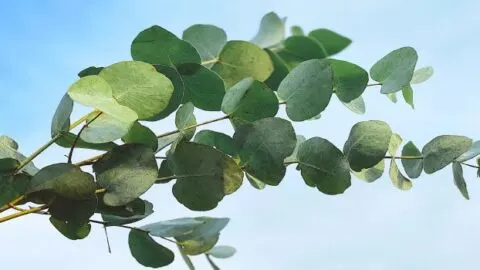They are known by most as containing healing properties, providing koalas with their only source of sustenance, and having distinctly smelling leaves.
Did you know that you could house this plant in your own home?
Yes, typically most think of a Eucalyptus as being upwards of 100 feet tall. These fragrant plants can actually be contained indoors.
You can either have a shrub that will always be able to fit within your house or transfer a tree to your backyard later on.
The opportunity to nurture these evergreens is quite rewarding, but you’ll need to know how to provide them with the essentials.
Read on to learn about how you can keep this plant around long enough to become an aromatic flora in your backyard.
Eucalyptus Plant Care
To care for a Eucalyptus plant provide it with well-draining clay-rich soil and bright indirect light. Water once a week and let it dry out in-between waterings. The ideal temperature is 64-72°F (18-22°C). Fertilize once at the beginning of the growing season using a balanced fertilizer with an NPK of 10-10-10 or 20-20-20.
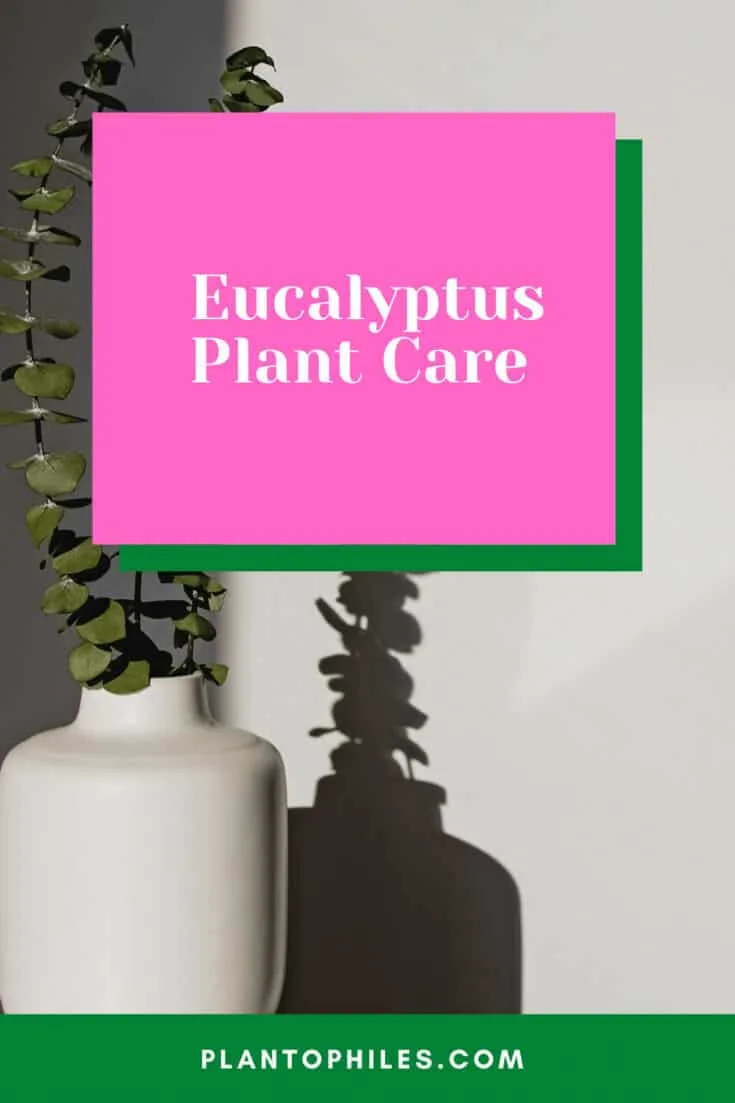
Eucalyptus Plant Care
Table of Contents
EUCALYPTUS PLANT CARE GUIDE
Remember how we mentioned that these plants are evergreens?
Well, although that is true, they can still lose their leaves. This isn’t much of an issue, but you can avoid a greater loss by researching their needs.

How to grow a Eucalyptus plant indoors
Soil
Naturally existing in either shrublands or dense forests, the Eucalyptus can handle a wide array of soil types.
The most important note is involving the drainage of excess water.
Most Eucalyptus owners have said that these individuals do well when placed in pots that have clay-rich soil and plenty of drainage holes on the bottom.
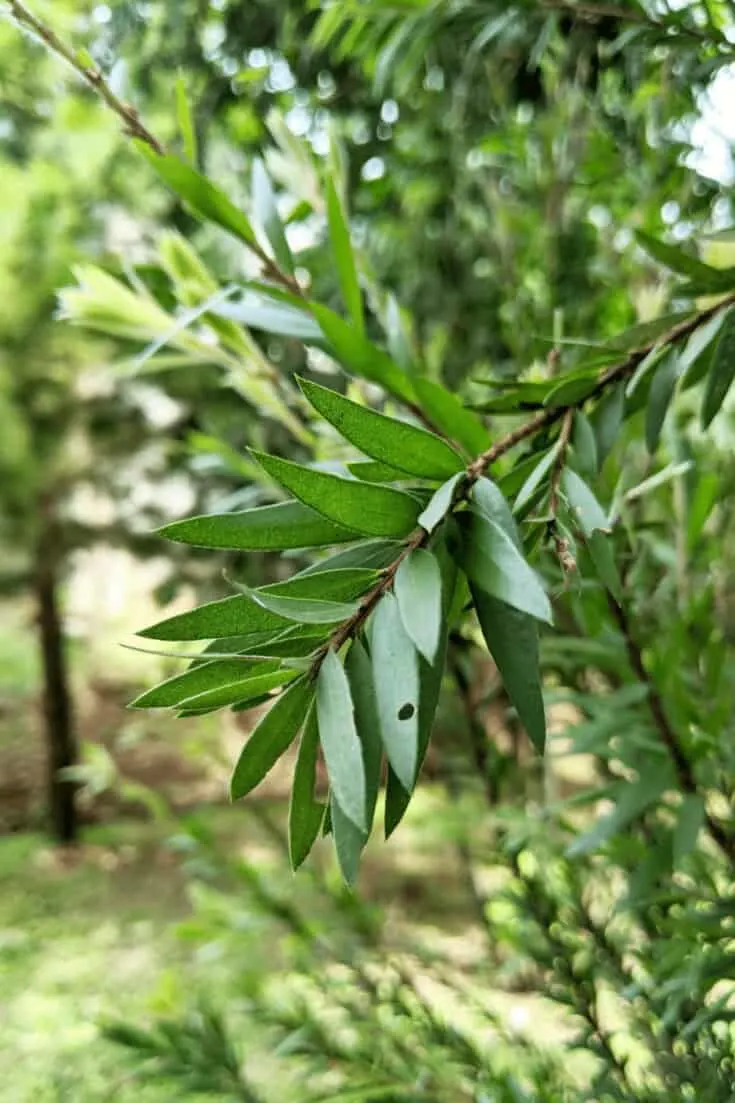
Eucalyptus plants prefer clay-rich soil
Light
Eucalyptus plants thrive in bright indirect light.
Sunlight is a vital aspect when it comes to the well-being of a Eucalyptus.
This rings true for both the indoor individuals and those growing tall as trees outdoors.
If you can find a spot in your house that has access to full, indirect sunlight, then that would be best.
Usually, the best place for an indoor Eucalyptus is the kitchen window or living room next to a large window.
We have a useful guide pertaining to the explanation of light levels for those who are concerned about their plant becoming overexposed.
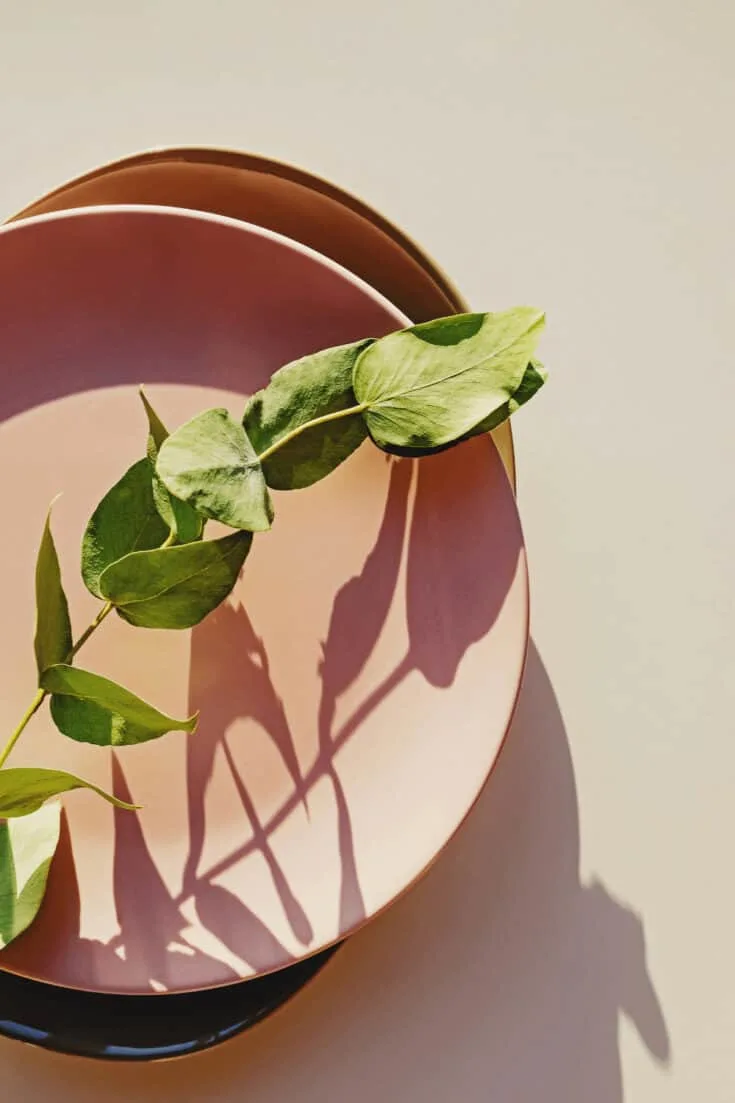
Eucalyptus thrives in bright indirect light
Watering
Water a Eucalyptus plant once a week and keep the soil slightly moist.
Mentioned earlier was the fact that the pot should be able to drain properly.
This can be done through ample drainage holes located on the bottom of the pot.
The soil needs to be damp without becoming oversaturated.
Being too dry is less of an issue since they are drought resistant.
For the warmer times of the year, you’ll likely need to water this plant once a week.
Other than that, every other week is sufficient.
Temperature
The ideal temperature for a Eucalyptus plant is 64-72°F (18-22°C).
People who own a Eucalyptus and keep it outside run the risk of exposing it to cold temperatures.
This is where indoor plant owners have the upper hand.
These house-dwelling evergreens are able to thrive with the average indoor temperatures as long as it doesn’t drop for long periods of time.
Anything below 10 degrees Celsius for an extended period of time is too much for a Eucalyptus to handle.
Humidity
Eucalyptus plants grow best in humidity around 40%.
The natural habitat of a Eucalyptus is known for being extremely arid.
For this reason, indoor plant owners don’t have to be too concerned.
The only time that you may need to give it extra attention is during the dry seasons when the plant can wilt.
If the leaves start to turn yellow and curl up, simply add a few squirts of mist and that will likely revive it.
Overall, this shouldn’t be an issue while you have your Eucalyptus indoors.
Fertilizer
A Eucalyptus plant should be fertilized once during the growing season using a balanced liquid or slow-release fertilizer with an NPK of 10-10-10 or 20-20-20.
The general rule for these evergreens is that they don’t really need a lot of fertilizer.
As long as they’re given the basic essentials, it isn’t difficult to raise them into a full-fledged tree.
For individuals kept in a pot, fertilizer can be a way that they get all of the needed nutrients.
The best time to apply this food is during the spring during the growing season.
Using a single application is more than enough.
Propagation
A Eucalyptus plant is best propagated through stem cuttings.
Propagation can be a great way to add to your collection of aromatic indoor plants.
These Australian floras can be copied in a number of ways.
One can either choose to propagate their Eucalyptus from a seedling, use micropropagation, or cuttings.
Stem cutting is by far the most simple, which is why we have provided a detailed step-by-step guide later on in the article.
Growth
The taller Eucalyptus plant trees, they grow at a rate of about 10 to 15 feet in a year.
According to the University of Arizona, Eucalyptus plants can grow up to 100 feet high.
The word “Eucalyptus” is a large category of plants from the island of Australia.
Although you may expect them all to be large trees with mint-like fragrances, that isn’t entirely true.
This genus has more than 750 separate species according to Oxford University, each of which ranges from 100-foot tall trees to six-foot shrubs.
You’ll want to carefully research which species you want before committing.
An interesting fact about Eucalyptus is that over half of their total growth is done in the first ten years alone.
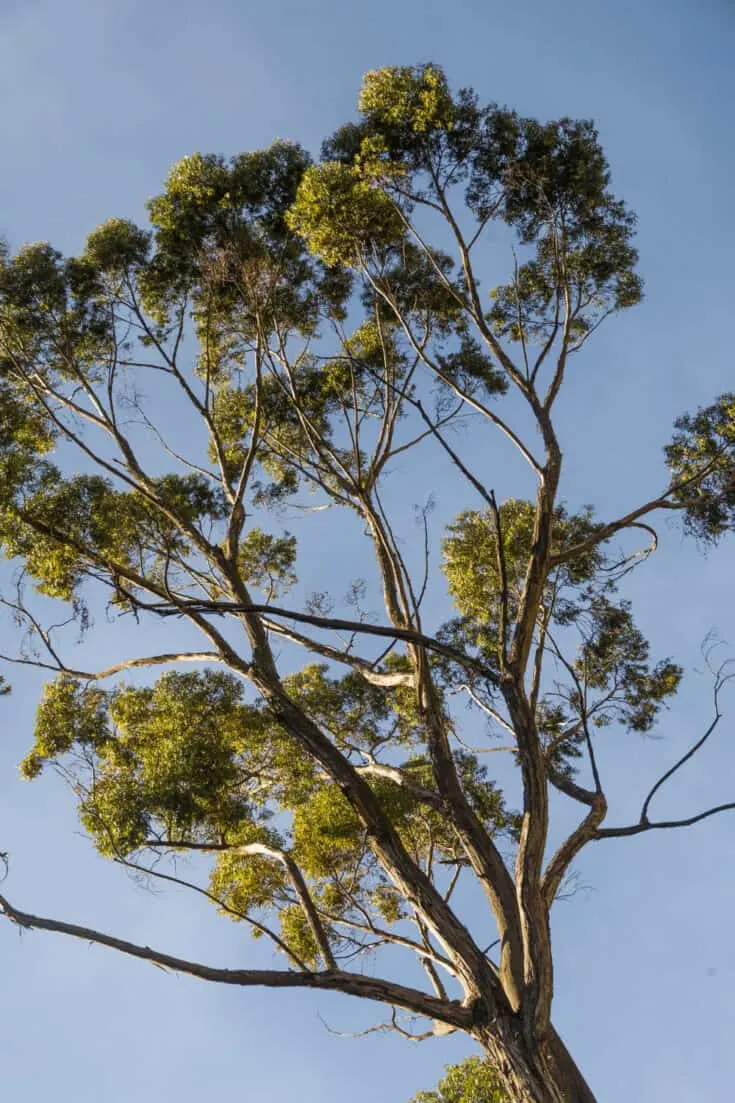
The Eucalyptus plant can grow up to 100 feet
Potting
The first few years of a Eucalyptus plant’s life involve a lot of rapid growth and repotting.
Regardless of the species, repotting is pivotal for keeping the root system healthy.
This means that the roots can quickly become cramped.
You may need to transfer your plant to a new container twice a year depending on what type of Eucalyptus you own. Otherwise, expect to repot it every few years. The best time to go about doing this is in the spring.
The ways to water your Eucalyptus plant
Water a Eucalyptus plant once a week and let it dry out in-between waterings.
These drought-resistant evergreens are less likely to suffer if you forget to water them. In fact, that’s far better than adding too much liquid.
You may be tempted to let your watering schedule become lax, but understanding the proper amount of liquid is key.
To make it easier, we’ve laid out everything you need in terms of supplying your Eucalyptus with just the right amount of water.
Implementing a schedule
Eucalyptus that is kept indoors doesn’t have the same requirements compared to individuals that are planted in a garden.
Potted plants tend to dry out more quickly.
It is important to keep in mind that your Eucalyptus will do better when being allowed to dry out between watering sessions.
As for a routine schedule, this depends on the age of your plant.
Newer individuals should be watered once a week, while those older than a year can happily be given water every other week.
Checking for dryness
Providing the correct amount of water can fluctuate based on several reasons such as the time of year, temperature, humidity, and many more. An easy way to check if the soil is too dry is to use your finger.
Place your finger about two inches deep into the soil. Is it dry? That’s your cue that it should be given more water.
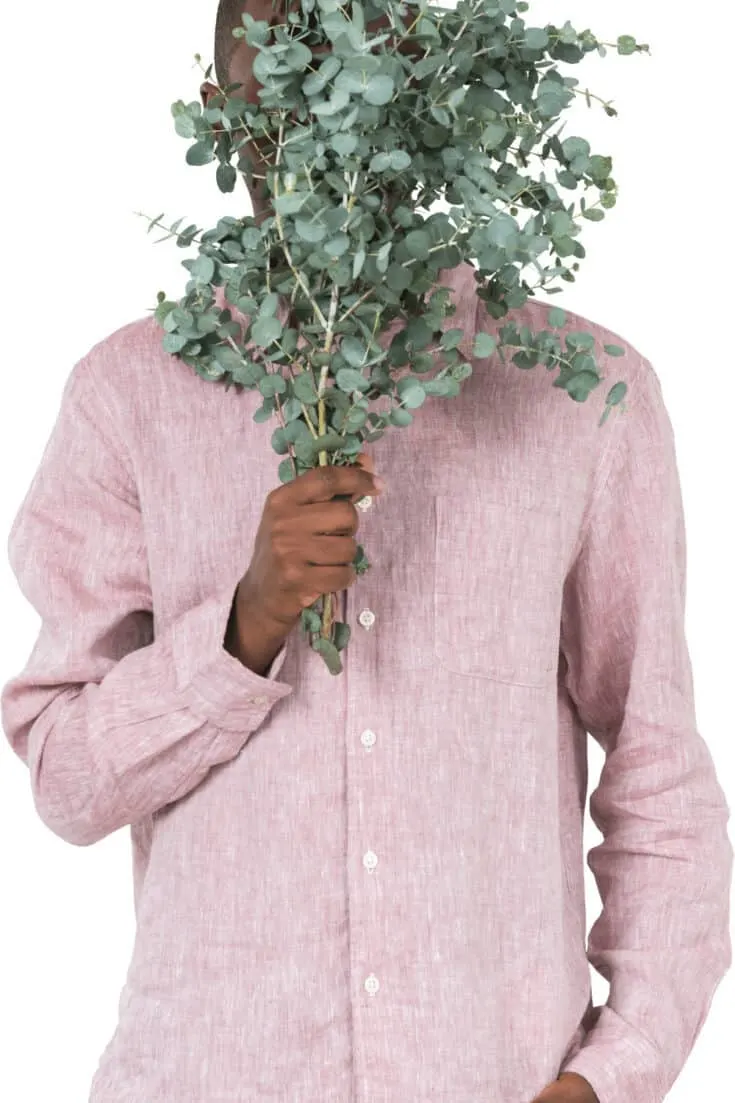
Eucalyptus is hardy and drought tolerant
Steps to a successful propagation
Whether you have a Eucalyptus shrub or tree, chances are that you want to make a copy.
Who wouldn’t with such aromatic leaves? Most plant enthusiasts agree that stem cuttings are the easiest way to propagate these evergreens.
You’ll want to go through this process in spring after the new growth has begun.
We hope that the following steps will help you obtain your own cloned Eucalyptus.
Propagation through stem cuttings
- Identify the plant that you want to replicate. It should have healthy growth and plenty of stems.
- Make clean cuts on sections that are three to four inches in length. There should be at least four leaf nodes on the stem that you cut.
- Use a sharp knife and carefully cut off any leaves that are on the bottom half of the stem.
- If you want, you can dip the exposed end of the stem in a rooting hormone.
- Place your stem cuttings into a pot with fresh soil after thoroughly watering the potted mixture.
- Use a clear plastic bag to hold in moisture, taking it off to water weekly.
- Keep your eyes on the plant for new growth. You should start to see roots in about four to ten weeks. Once this happens, transfer to a larger pot.
Eucalyptus Pest Problems
Humans aren’t the only ones drawn to the iconic smell of Eucalyptus leaves.
There are plenty of bugs and other pests that like to take residence in these hardy evergreens.
By knowing which pests your shrub or tree could be attacked by, you’ll have the upper hand.
The main pests that a Eucalyptus owner would have to worry about are beetle borers, psyllids, beetles, sharpshooters, wasps, and whiteflies.
Some of these are known to cause defoliation while others can kill the plant altogether. Depending on the severity of the infestation, you may need to use chemicals or insecticides.
Certain insects can also be taken out with the addition of eucalyptus oil, hand soap, and water. Look up specific instructions for how to go about doing this. An unbalanced solution can result in damage of the leaves.
Eucalyptus Plant General Problems
Knowing about the basic needs of a Eucalyptus is a great way to start. But what if something were to go wrong later down the road?
Understanding the telltale signs of a struggling plant is key in fixing a problem before it is detrimental.
We’ve highlighted the two most common and their solutions.
Leaves shifting to a brown hue
A Eucalyptus that experiences browning of the leaves is usually at risk of having various diseases such as root, foot, collar, or crown rot.
The discoloration is typically the first sign followed by the bark becoming reddish brown.
There are certain oils specifically used to combat the issue of diseases that may alter the coloration of your plant’s leaves. This is typically sold as Neem oil. It can be used to tackle either fungus or pests.
Yellowing of the leaves
As you may have guessed by now, the leaves can tell you a lot about your plant’s health.
Browning is an indication that there is a possible disease or fungus. Yellow coloration, on the other hand, alludes to an excess of liquid. This can be a result of overwatering or too much humidity.
The solution to yellowing leaves is to cut back on watering and see if that does the trick.
This may take a few tries, as finding the right watering schedule is tricky. If water doesn’t seem to be it then you’ll want to move your Eucalyptus to an area with lower humidity.
Why is my Eucalyptus drying out?
The Eucalyptus plant is a drought-tolerant species – this is especially true for an established tree, usually one growing outdoors in the ground.
An indoor, containerized pot can tolerate a little drying out, but not much.
That’s why we have said they should be watered around once a week, especially in the warmer months. It is very true that the potted varieties are far thirstier than those grown outdoors.
Ask any nursery what their watering schedule for their Eucalyptus is – you might be surprised to find out just how thirsty they really are.
Signs of drying out could mean your beautiful tree is beginning to be in trouble. If you suspect this is the case, check one of its branches by snapping a little bit off.
If it is slightly moist and green, then that’s a good sign. If the branch however snaps off quickly and is brown or twiggy inside, then you potentially have an issue
Other signs include the bark beginning to peel off, looking dry, maybe weirdly changing shape or developing a “warped” effect.
Your first thought may be that you are not watering the tree enough. But these signs of drying out may not actually have anything to do with your watering schedule.
More often, it could be evidence that your tree is lacking in essential nutrients. During growing periods you may need to “feed” your plant once or twice a month.
Another reason your Eucalyptus may be drying out has to do with the roots. Have you recently repotted or transplanted your tree?
No matter how carefully you do it, this process always causes stress to a plant or tree. The roots, temporarily upset, may take a little time to adapt to their new environment.
As they focus on readjusting, they forget to drink, and therefore often look a little withered or dried out.
Speaking of roots, whether you have recently repotted or not, you could have another issue.
The roots of a Eucalyptus plant can often become easily “root bound”. If your roots haven’t spread out enough, then even if you water on a schedule they may not be able to drink it all.
Signs of this of course are the water lying puddled in the soil. Worse, if your roots have actually died, then they just simply will not be able to drink any water at all!
Unfortunately, those are not the only reasons that may cause this beautiful tree to look dried out! You have a multitude of other causes that can cause drying leaves or branches.
Fungal infections too may cause drying. You could treat it with a fungicide or neem oil. And if you ever moved your Eucalyptus outside and it was subject to cold damage, this could be a delayed reaction to frost or severe low temperatures.
In these instances, if you have new branches appearing, this is a good sign. The tree will likely regenerate itself slowly.
Curling Leaves
Curling leaves on your Eucalyptus can be a worrying sight, but if addressed quickly should not be an issue.
At the very onset of this symptom of distress, you can try to mist the leaves to see if it helps. If this doesn’t work you may have another problem.
As the tree is generally drought-tolerant, the issue is more likely to be systemic, rather than directly related to watering habits.
Unless of course, you have forgotten to water it weekly.
Reasons for leaf curl in Eucalyptus can include root distress – often due to repotting or roots not having space to spread out.
If you have replanted the tree properly and allowed the roots enough space to spread out, any initial sign of leaves curling should be temporary.
Make sure all the root section is covered if you do any repotting of a Eucalyptus.
Generally, as the tree becomes established in its new soil, you should see it begin to recover pretty quickly.
And although the leaves and trees themselves are well adapted to growing in arid environments in the wild, you may find indoor versions struggle with modern living conditions.
Particularly in air-conditioned homes in the summer, you may see leaves curl the odd time.
Follow the care instructions in this guide to try to give your Eucalyptus the optimal conditions in which to thrive.
Five key points to a happy Eucalyptus
We know that you likely can’t memorize every little trick and tip to keeping your Eucalyptus happy. To make it easier, we’ve summarized the top five and combined them in a list down below.
- Use soil that can be drained properly, preferably one that is rich in clay.
- Allow your Eucalyptus to get lots of bright, indirect sunlight!
- Higher temperatures with average humidity will keep your Eucalyptus happy.
- Once your plant has matured, water every other week and allow it to dry out plenty between sessions.
- Keep a watchful eye for any pests that might try to take residence in your Eucalyptus.
How to revive Eucalyptus
As we have seen, there are a few issues that can affect the beautiful Eucalyptus tree.
Let’s look here at how to revive your Eucalyptus plant so you can continue to enjoy its benefits.
Generally, signs of stress on the outside of the plant are related to the root system and soil environments.
First, try to identify the issue. Is it the watering schedule – too much? Too little? Has it been recently replanted? Is your soil following our recommendations for content and consistency?
Has it been exposed to frost or very low temperatures? Does it get enough light? And finally, is there any risk of fungal disease?
Once you have identified the issue, you can begin to try to address it. Ensure your tree likes the soil it is in. Make sure your roots are not tangled or balled. Fertilize in the growing season, at least once a month, preferably twice.
Make sure it is getting enough light – full, constant indirect sunlight for the indoor tree is best.
If you see yellow leaves, you may be overwatering, or exposing it to too much humidity. Ease back on the watering to see if that helps. Remove any insects and unwanted visitors.
Browning of the bark or leaves can be a sign of deadly root or crown rot – so treat the tree with neem oil to try to remove the fungal infection, and act on the cause of the rot by addressing soil consistency.
If you see water pooling in the soil you need to try a number of things.
The soil may be incorrect content and not provide enough draining. You need to check if your pot has drainage holes too.
Your roots may be unhappy, suffering from rot, or generally not adapting to the environment. Follow the soil guide here to try to revive it.
It is possible to revive a Eucalyptus plant if you take the recommended actions quickly!
Frequently Asked Questions About The Eucalyptus Plant
What is the Eucalyptus plant good for?
Other than its smell, Eucalyptus plants are known for helping with pain, relaxation, repelling insects, freshening your breath, and even acting as a cold suppressor.
Can you over-water an Eucalyptus plant?
You can in fact provide your Eucalyptus with too much water. In these situations, you may want to hold off on giving your plant water for a week so that it can completely dry out. Then adjust your watering schedule and see if it heals.
Do Eucalyptus trees lose their leaves?
Evergreen plants are known for holding onto their leaves throughout the year. Despite being an evergreen plant, there are some species of Eucalyptus that lose their foliage when faced with drier conditions. If you do not own a tropical Eucalyptus, the loss of leaves may be due to leaf scorch.
Are Eucalyptus plants pet-safe?
Eucalyptus plants are indeed toxic to pets, which is toxic to cats, dogs, as well as horses.

Daniel has been a plant enthusiast for over 20 years. He owns hundreds of houseplants and prepares for the chili growing seasons yearly with great anticipation. His favorite plants are plant species in the Araceae family, such as Monstera, Philodendron, and Anthurium. He also loves gardening and is growing hot peppers, tomatoes, and many more vegetables.

